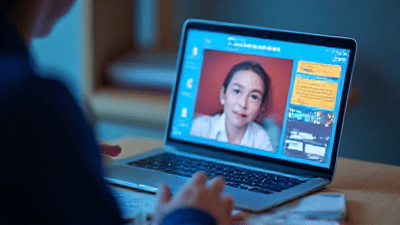
In recent years, gamification has emerged as a transformative approach in education, changing the way students engage with learning material. By incorporating game-like elements into educational settings, educators are finding innovative ways to motivate students, enhance learning experiences, and improve academic outcomes.
Understanding Gamification
Gamification refers to the integration of game-design elements and principles into non-gaming contexts, such as education. The primary goal of gamification is to increase student engagement by making learning more enjoyable and interactive. This can involve elements such as points, badges, leaderboards, challenges, levels, and rewards that promote healthy competition and a sense of achievement.
The underlying premise of gamification is that the characteristics that make games appealing can be applied to educational settings to motivate learners, encourage participation, and create a positive learning environment. In essence, gamification taps into the natural human desire for achievement, competition, and social interaction.
The Importance of Gamifying Education
1. Increased Engagement and Motivation
One of the most significant benefits of gamifying education is the increase in student engagement and motivation. Traditional teaching methods can sometimes lead to boredom and disinterest among students. By introducing game mechanics, educators can create a more dynamic and interactive learning experience that encourages students to participate actively.
Gamification fosters intrinsic motivation by tapping into students' interests and encouraging them to take ownership of their learning. When students are motivated to engage with the material, they are more likely to retain information and develop a deeper understanding of the subject matter.
2. Enhanced Learning Outcomes
Research has shown that gamification can lead to improved academic performance. By making learning enjoyable and interactive, students are more likely to invest time and effort into their studies. The competitive nature of gamification can also push learners to strive for excellence, resulting in higher achievement levels.
Moreover, gamified learning often allows for instant feedback, enabling students to understand their strengths and weaknesses in real time. This feedback loop assists them in identifying areas for improvement and encourages a growth mindset.
3. Development of Critical Skills
Gamification in education not only enhances subject knowledge but also aids in the development of essential skills that are vital in today’s world. These skills include:
-
Critical Thinking: Many gamified activities involve problem-solving elements that challenge students to think critically and develop strategies to overcome obstacles.
-
Collaboration: Group-based challenges promote teamwork and communication among students, fostering collaboration skills that are essential in both academic and professional settings.
-
Time Management: Gamification often includes deadlines and time constraints, helping students learn to prioritize tasks and manage their time effectively.
4. Fostering a Positive Learning Environment
Gamified education creates a positive classroom atmosphere where students feel comfortable taking risks and trying new things. The game-like elements can reduce anxiety associated with traditional assessments, as students are often more willing to participate in activities that feel fun and engaging.
Encouraging a growth mindset through gamification helps students see learning as a journey rather than a destination. They learn to embrace challenges and view failures as opportunities for growth, which fosters resilience and perseverance.
Effective Strategies for Gamification
Implementing gamification into education requires thoughtful planning and execution. Here are some effective strategies educators can employ to create engaging and meaningful gamified learning experiences.
1. Establish Clear Objectives
Before introducing any gamified elements, it is essential to define clear learning objectives. What knowledge or skills do you want students to acquire? By establishing specific goals, educators can develop activities and challenges that are aligned with these objectives, ensuring that the gamification process enhances learning rather than detracting from it.
2. Incorporate Game Elements
Choose appropriate game elements to integrate into the learning experience. Some popular game mechanics include:
-
Points: Reward students with points for completing tasks, participating in discussions, or achieving milestones. This encourages a sense of accomplishment and progress.
-
Badges: Create badges that students can earn for specific achievements, such as mastering a skill or completing a project. Badges serve as visual representations of accomplishments and can motivate students to strive for more.
-
Leaderboards: Display a leaderboard that showcases students' achievements and rankings. This element fosters healthy competition and encourages students to outperform their peers.
-
Levels and Challenges: Introduce different levels of difficulty and challenges that students must complete to progress. This structure creates a sense of adventure and encourages learners to push their boundaries.
3. Foster Collaboration and Teamwork
Encouraging collaboration among students can enhance the gamified experience. Group challenges or team-based projects can promote communication, problem-solving, and social skills. Moreover, fostering a sense of community within the classroom allows students to support and motivate one another, making the learning process more enjoyable.
4. Integrate Technology
Technology can play a significant role in gamifying education. Numerous digital platforms and tools specialize in gamification, offering educators the ability to create interactive and engaging learning experiences. Some popular platforms include:
-
Kahoot!: This quiz-based platform allows educators to create fun quizzes that students can complete in real time using their devices.
-
Quizizz: Similar to Kahoot!, Quizizz enables teachers to create quizzes that students can take at their own pace while incorporating game-like features such as memes and leaderboards.
-
Classcraft: This platform turns the classroom into a role-playing game, where students can earn points and unlock new abilities by completing assignments and collaborating with their peers.
5. Provide Immediate Feedback
Offering timely and constructive feedback is crucial in a gamified environment. When students receive immediate feedback, they can identify areas for improvement and make adjustments to their learning strategies. Feedback can be provided through automated scoring systems, verbal feedback during activities, or peer reviews. This process encourages continuous improvement and helps students remain motivated throughout their learning journey.
6. Create a Narrative
Storytelling can enhance the gamified experience by adding context and meaning to the activities. Creating a narrative or theme for the learning journey allows students to immerse themselves in the material and fosters a sense of adventure. For example, the classroom can be transformed into a quest where students embark on challenges to save a virtual kingdom or uncover hidden treasures related to their subject matter.

Real-World Examples of Gamified Education
Several institutions have successfully implemented gamification strategies to enhance learning experiences. Here are a few noteworthy examples:
1. Duolingo
Duolingo is a language-learning platform that utilizes gamification to engage students in learning new languages. With features like points, levels, and challenges, users are motivated to practice daily to earn rewards. The incorporation of game-like elements has made language learning accessible and enjoyable for millions of users worldwide.
2. Class Dojo
Class Dojo is an educational platform that fosters positive behavior and classroom management through gamification. Teachers can award point-based rewards for student achievements, encourage collaboration through group challenges, and communicate with parents to create a community of support.
3. Breakout EDU
Breakout EDU offers immersive learning experiences through escape room-style games that challenge students to solve problems and collaborate to complete tasks. These engaging games promote critical thinking, teamwork, and application of knowledge across various subjects.
4. Minecraft: Education Edition
Minecraft has been adapted for educational use, allowing students to explore concepts such as architecture, geography, and history in an interactive and gamified environment. The platform encourages creativity and collaboration while promoting critical thinking skills.
Challenges of Gamifying Education
While gamification offers numerous benefits, there are some challenges educators may encounter when integrating it into their classrooms:
1. Overemphasis on Competition
While competition can motivate students, it may also lead to increased stress and anxiety for some learners. It is essential to balance competitive elements with collaborative opportunities to ensure that all students feel supported and engaged.
2. Resource Limitations
Implementing gamification may require training, technology, and resources that some educators may find challenging to access. Schools should provide adequate support and training to enable teachers to effectively integrate gamification into their teaching practices.
3. Distraction
For some students, the gamified elements may become distractions rather than motivators. Educators must carefully design learning experiences to ensure that game mechanics enhance rather than detract from the educational goals.
Conclusion
Gamifying education represents a promising approach to transforming the learning experience for students. By incorporating game-like elements into the classroom, educators can foster engagement, enhance learning outcomes, and promote the development of essential skills. While there may be challenges in implementing gamification, the potential benefits far outweigh the drawbacks.
As the educational landscape continues to evolve, embracing innovative strategies like gamification will be critical for preparing students for a rapidly changing world. By making learning fun and effective, teachers can inspire a generation of lifelong learners eager to explore new ideas, collaborate with others, and overcome challenges.



